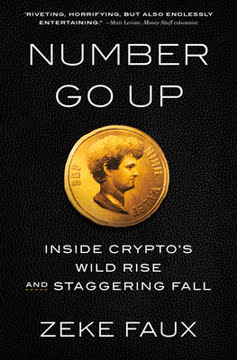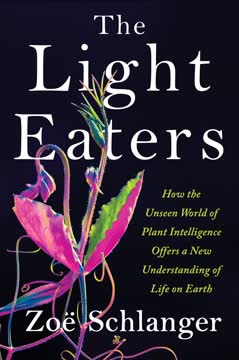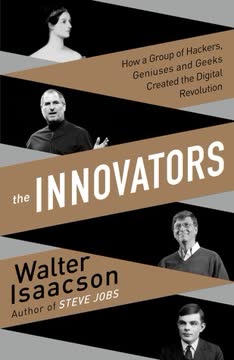Key Takeaways
1. LEGO's core values and founding principles drove its success
Only the best is good enough.
Founding principles. LEGO's success was built on core values established by founder Ole Kirk Christiansen:
- Focus on quality and craftsmanship
- Commitment to children's development through play
- Belief in the power of imagination and creativity
System of Play. The LEGO brick and its interlocking system became the foundation of the company's success:
- Backward compatibility ensured all bricks worked together
- Allowed for endless creative possibilities
- Created a loyal customer base and repeat sales
Brand authenticity. LEGO maintained its appeal by staying true to its roots:
- Realistic models based on everyday objects and themes
- Emphasis on building and construction
- Fostering a sense of accomplishment in children
2. Innovation led to near-bankruptcy in the early 2000s
We were a heavy institution. We were losing our dynamism, and our fun.
Overambitious expansion. Under CEO Poul Plougmann, LEGO pursued aggressive growth strategies:
- Diversification into theme parks, retail stores, and video games
- Launch of electronic toys and action figures
- Attempts to appeal to a wider audience beyond core LEGO fans
Loss of focus. The company strayed from its core competencies:
- Neglect of traditional construction toys
- Overemphasis on licensed properties and media tie-ins
- Lack of profitability in new ventures
Financial crisis. By 2003, LEGO faced severe financial difficulties:
- Record losses and mounting debt
- Declining market share in core markets
- Risk of losing independence as a family-owned company
3. Refocusing on core products and customers sparked turnaround
We wanted to break the back of the culture.
New leadership. Jørgen Vig Knudstorp became CEO in 2004 and implemented a turnaround strategy:
- Focus on profitability rather than growth at any cost
- Streamlining operations and cutting costs
- Reconnecting with core customers and retailers
Back to basics. LEGO returned to its roots in construction toys:
- Revitalization of classic themes like LEGO City
- Emphasis on the brick and the LEGO System of Play
- Improved quality control and design processes
Financial recovery. The refocus on core competencies led to a dramatic turnaround:
- Return to profitability within two years
- Steady growth in sales and market share
- Strengthened brand identity and customer loyalty
4. LEGO mastered customer-driven innovation through deep engagement
Children and drunks are the last honest people left on the face of the Earth. And children will never buy a product that isn't fun.
Understanding customers. LEGO developed a deep understanding of its target market:
- Extensive market research and focus groups
- In-home observations of children at play
- Collaboration with child development experts
Co-creation with fans. LEGO actively engaged its passionate adult fan base:
- Creation of LEGO Ambassador program
- Soliciting ideas and feedback through online platforms
- Involving fans in product development (e.g., Mindstorms)
Iterative design process. LEGO implemented a rigorous product development cycle:
- Rapid prototyping and testing with children
- Continuous refinement based on feedback
- Balance between innovation and maintaining brand identity
5. Full-spectrum innovation: Bionicle's success and lessons learned
Bionicle is the toy that saved LEGO.
Comprehensive approach. Bionicle exemplified LEGO's full-spectrum innovation:
- New building system with articulated figures
- Rich storyline and character development
- Multi-platform media presence (comics, movies, video games)
Revenue diversification. Bionicle created multiple income streams:
- Traditional toy sales
- Licensing and merchandising
- Media content production and distribution
Lessons for future innovation. The success of Bionicle informed LEGO's approach to new product development:
- Importance of storytelling and world-building
- Balancing novelty with core LEGO values
- Leveraging multiple channels to engage customers
6. Open innovation: Mindstorms and the power of co-creation
You can't fire them, because you haven't hired them.
Embracing the hacker community. LEGO's response to Mindstorms hacking set a new precedent:
- Initially considering legal action against hackers
- Deciding to embrace and encourage user modifications
- Adding a "right to hack" clause to the software license
Collaborative development. LEGO actively involved expert users in product development:
- Creation of the Mindstorms User Panel (MUP)
- Incorporating user feedback and ideas into new versions
- Balancing user input with internal design expertise
Benefits of open innovation. The Mindstorms experience demonstrated the power of co-creation:
- Rapid product improvement and innovation
- Expanded market reach through user evangelism
- Building a passionate and loyal community around the product
7. Disruptive innovation challenges: LEGO Universe's rise and fall
This is the largest and most complex project that LEGO has ever undertaken. It touches every part of the company.
Ambitious vision. LEGO Universe aimed to disrupt the company's own business model:
- Creating a massively multiplayer online game based on LEGO
- Attempting to bridge physical and digital play experiences
- Targeting a new market of online gamers
Development challenges. The project faced numerous obstacles:
- Complexity of game development and online infrastructure
- Balancing LEGO's family-friendly values with gaming expectations
- High development costs and extended timelines
Lessons learned. The failure of LEGO Universe provided valuable insights:
- Importance of staying true to core competencies
- Challenges of entering unfamiliar markets
- Need for realistic expectations and scalable development processes
8. Blue ocean strategy: LEGO Games' success in an untapped market
Obviously LEGO, but never seen before.
Identifying a new market. LEGO Games targeted an untapped opportunity:
- Combining traditional board games with LEGO building
- Appealing to families and a broader age range
- Creating a new category in the toy market
Innovative development process. The creation of LEGO Games involved:
- Small, focused team working in secrecy
- Rapid prototyping and extensive play-testing
- Collaboration with expert game designers
Market success. LEGO Games quickly became a hit:
- Exceeded sales expectations in initial markets
- Expanded LEGO's presence in new retail channels
- Demonstrated the potential of blue ocean strategies
9. Leveraging diverse talent: The creation of Ninjago
People who come from different disciplines provoke and challenge each other, which is a lot more fruitful than working with people who think the same way.
Diverse team. The Ninjago development team brought together talent from various backgrounds:
- Designers, marketers, and storytellers from different countries
- Blend of LEGO veterans and fresh perspectives
- Collaboration with external partners (e.g., Cartoon Network)
Comprehensive product ecosystem. Ninjago was designed as a multi-faceted experience:
- Traditional LEGO sets and minifigures
- Television series and video games
- Board games, apps, and books
Record-breaking success. Ninjago became one of LEGO's most successful original themes:
- Highest single-year sales for a LEGO-invented theme
- Demonstrated the power of diverse, empowered teams
- Set a new standard for future LEGO innovations
Last updated:
FAQ
What's Brick by Brick about?
- LEGO's Evolution: The book details LEGO's journey from near bankruptcy to becoming a global leader in the toy industry.
- Innovation Focus: It highlights LEGO's innovative strategies and how they overcame challenges, especially in the early 2000s.
- Management Insights: The narrative provides insights into effective management practices and the importance of core values and customer engagement.
Why should I read Brick by Brick?
- Invaluable Lessons: Gain insights into innovation management, leadership, and understanding customer needs.
- Inspiring Transformation: Learn from LEGO's transformation from a struggling company to a market leader.
- Practical Frameworks: Discover strategies and frameworks applicable to various industries for fostering innovation.
What are the key takeaways of Brick by Brick?
- Seven Truths of Innovation: The book introduces principles like hiring diverse teams and being customer-driven.
- Core Values Focus: Emphasizes returning to foundational principles like quality and creativity.
- Creativity and Discipline: Highlights balancing creative freedom with operational discipline for sustainable growth.
What are the best quotes from Brick by Brick and what do they mean?
- “Only the best is good enough”: Reflects LEGO's commitment to quality and excellence.
- “Innovation flourishes when the space available for it is limited”: Suggests constraints can enhance creativity.
- “We must remain true to who we are and not what others want us to be”: Emphasizes authenticity in brand identity.
How did LEGO's management approach change over time in Brick by Brick?
- Customer Focus Shift: Management evolved to prioritize customer insights and feedback.
- Core Products Emphasis: Returned focus to core products that resonated with customers.
- Structured Processes: Adopted structured processes for product development and testing.
What are the "seven truths of innovation" mentioned in Brick by Brick?
- Diverse Teams: Hiring diverse talents fosters creativity.
- Customer-Driven: Understanding customer needs is crucial.
- Open Innovation: Engaging with external ideas enhances creativity.
- Disruptive Innovation: Embracing new technologies keeps a company relevant.
How did LEGO's focus on its core values impact its recovery?
- Brand Identity Reinforcement: Strengthened brand identity resonated with customers and employees.
- Guided Development: Core values guided product development decisions.
- Customer Loyalty: Focus on quality and creativity rekindled customer loyalty.
What role did customer feedback play in LEGO's innovation process as described in Brick by Brick?
- Direct Engagement: Engaged directly with customers for insights and feedback.
- Prototype Testing: Implemented testing with kids to ensure product resonance.
- Informed Decisions: Feedback informed strategic pivots and adjustments.
How did LEGO manage its product portfolio after the crisis?
- Streamlined Offerings: Reduced product portfolio by 30%, focusing on profitable lines.
- Profitability Metrics: Introduced metrics to assess financial viability of products.
- Classic Themes Return: Revived successful themes like LEGO City and DUPLO.
What is the "Shared Vision" strategy in Brick by Brick?
- Strategic Framework: A comprehensive plan to guide LEGO's turnaround.
- Phased Approach: Implemented in phases to stabilize, build, and grow the business.
- Cultural Shift: Fostered a culture of innovation and collaboration.
How did LEGO utilize the concept of "full-spectrum innovation"?
- Diverse Innovations: Embraced a wide range of innovations, including product and marketing.
- Complementary Innovations: Successful lines built on complementary innovations.
- Iterative Process: Involved testing and refining ideas based on feedback.
What lessons can other companies learn from LEGO's experience?
- Embrace Innovation: Encourage experimentation and learning from failures.
- Core Strengths Focus: Leverage core strengths while exploring new opportunities.
- Customer Engagement: Actively engage with customers for relevant and successful offerings.
Review Summary
Brick by Brick received mixed reviews, with an average rating of 3.85/5. Readers appreciated the insightful history of LEGO's near-bankruptcy and subsequent recovery through innovation. Many found the business analysis fascinating, particularly regarding LEGO's strategies and product development. However, some critics felt the book was repetitive, overly focused on business jargon, and lacked a coherent narrative. Despite these criticisms, fans of LEGO and those interested in business innovation generally found the book informative and engaging.
Similar Books










Download PDF
Download EPUB
.epub digital book format is ideal for reading ebooks on phones, tablets, and e-readers.





